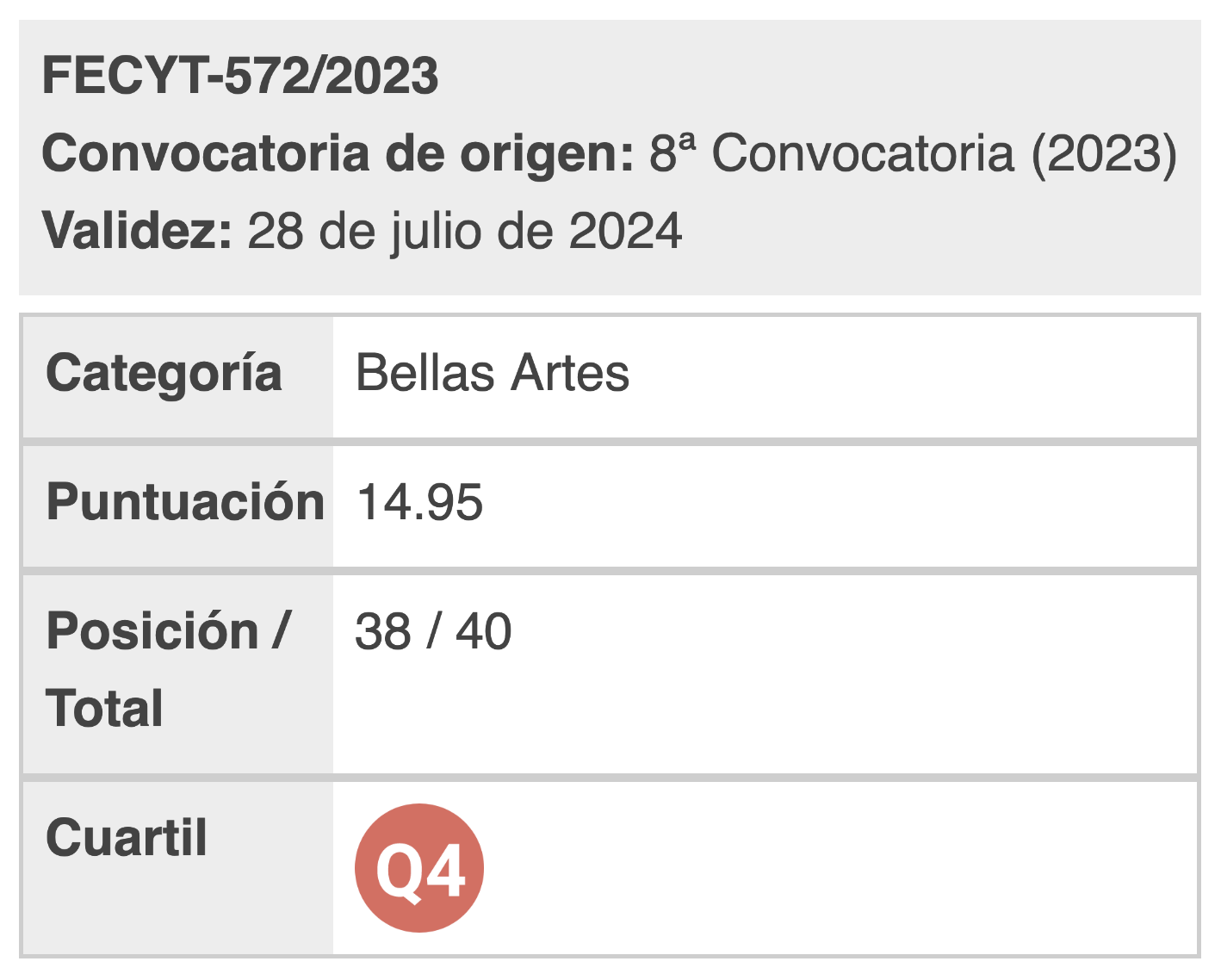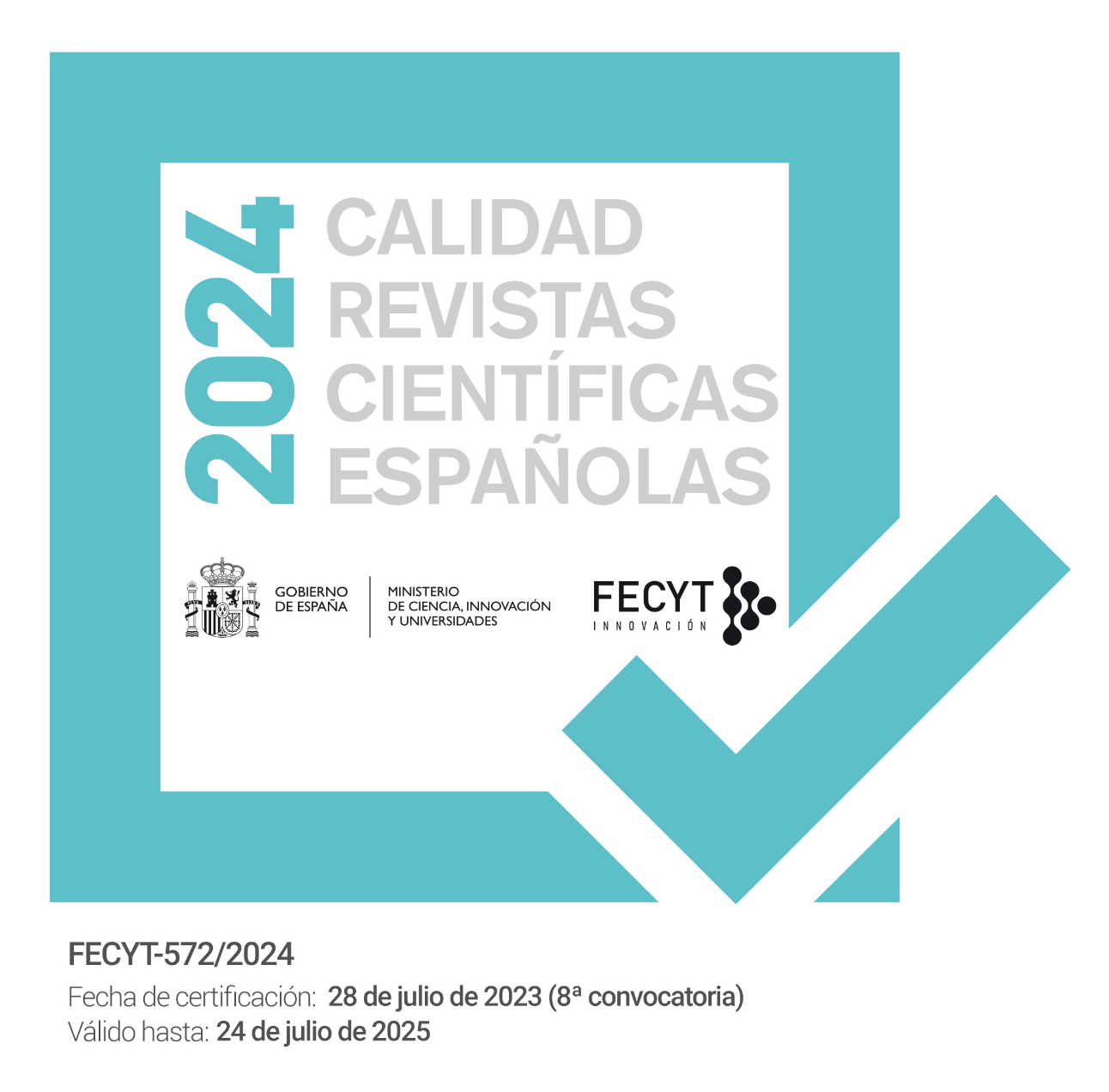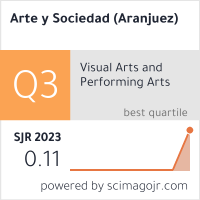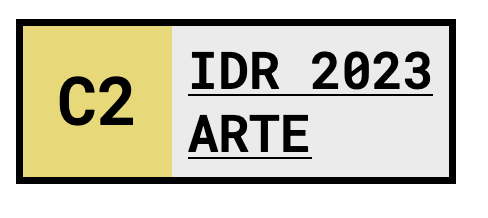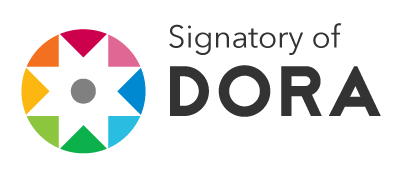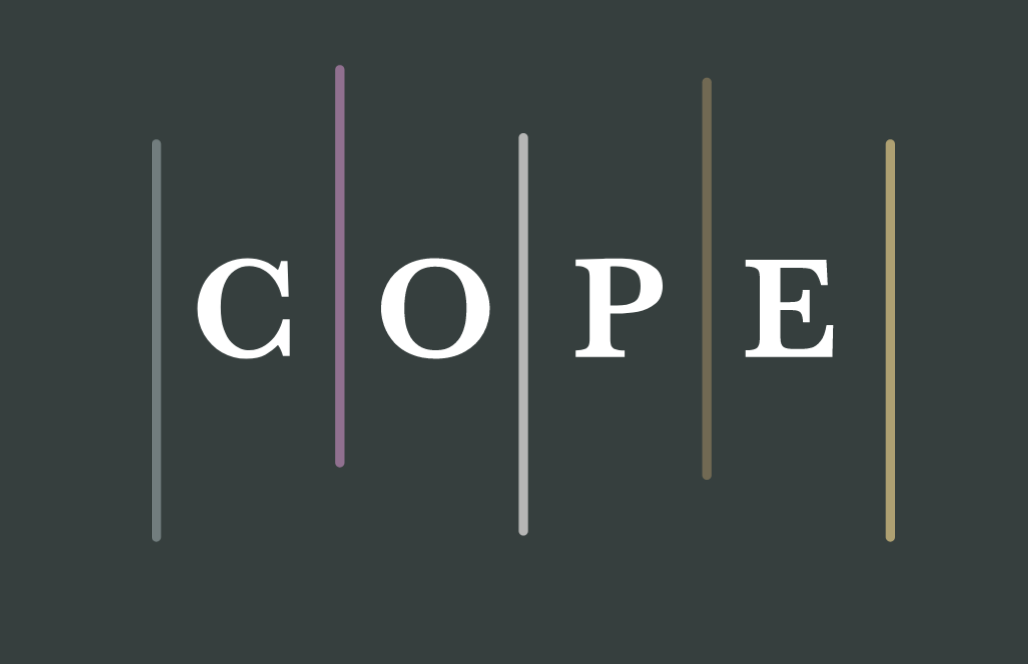Aesthetic of the hypermediated fellow. Edition styling and self.curation on the Web.
DOI:
https://doi.org/10.5281/zenodo.7655882Keywords:
Self, aesthetics, edition, style, self-curationAbstract
In this article, I argue that social networks have taken on the character of an image market where the competition for attention has turned into aestheticization processes based on the use of different resources and strategies that allow the control of self-representations through the edition of the image of the Self, personal distinction through stylization, and the projection of a consistent visual identity through self-curation and transmedia narrations.
References
Benjamin, W. (1989) Pequeña historia de la fotografía, en Discursos Interrumpidos I: Filosofía del arte y de la historia, Taurus.
Boellstorf, T. (2008) Coming of age in Second Life. Princeton.
Bourdieu, P. (2007) El sentido práctico. Siglo XXI.
Brea, J. L. (2005) Estudios visuales. La epistemología de la visualidad en la era de la globalización. Akal.
_______ (2010) Las tres eras de la imagen. Imagen-materia, film, e-image, Madrid: Akal.
Bruns, A. (2008) Blogs, Wikipedia, Second Life, and Beyond: From Production to Produsage. Nueva York: Peter Lang.
Caldeira, S. (2016) Identities in Flux: An Analysis to Photographic Self-Representation on Instagram, Observatorio (OBS*), 10 (3), 135-158. Consultado en: http://obs.obercom.pt/index.php/obs/article/view/1031, el 12/04/2019.
Chua, T. H. H. y Chang, L. (2016) Follow Me and like My Beautiful Selfies: Singapore Teenage Girls’ Engagement in Self-Presentation and Peer Comparison on social media, Computers in Human Behavior, 55, 190-197, https://doi.org/10.1016/j.chb.2015.09.011.
Cover, R. (2016) Digital identities. Creating and Communicating the Online Self. Elsevier.
Fontcuberta, J. (2017) La furia de las imágenes. Notas sobre la postfotografía. Galaxia Gutenberg.
Goffman, E. (1981) La presentación de la persona en la vida cotidiana. Amorrurtu.
Gómez Cruz, E. y Thornham, H. (2015), Selfies beyond Self-Representation: The (Theoretical) f(r)Ictions of a Practice, Journal of Aesthetics & Culture, 7 (1), 1-10, https://doi.org/10.3402/jac.v7.28073.
Hermógenes (1993) Sobre las formas del estilo. Gredos.
Kasch, D. (2013) Social media selves: College students’ curation of Self and Others through Facebook. [Tesis Doctoral], Universidad de California, Los Ángeles. Consultado en: https://escholarship.org/uc/item/04259791, el 21/04/2019.
Khalid, N. L.; Jayasainan, S. Y. y Hassim, N. (2018) Social Media Influencers - Shaping Consumption Culture among Malaysian Youth, SHS Web of Conferences, 53, https://doi.org/10.1051/shsconf/20185302008.
Khamis, S., Ang, L., Welling, R. (2016) Self-branding, ‘micro-celebrity’ and the rise of Social Media Influencers, Celebrity Studies, 8 (2), 191-208, https://doi.org/10.1080/19392397.2016.1218292.
Kjellberg, F. (2017, enero 6) Forced Positivity on YouTube. Consultado en: https://www.youtube.com/watch?v=iyGI1uHyyws, el 20/05/2019
Lipovetsky, G. (2000) La era del vacío. Anagrama.
Manovich, L. (2017) Instagram and contemporary image, [autopublicación electronica]. Consultado en: http://manovich.net/index.php/projects/instagram-and-contemporary-image, el 20/04/2019.
Martín-Prada, J. (2018) El ver y las imágenes en el tiempo de Internet. Akal.
Marwick, A. E. (2015) Instafame: Luxury Selfies in the Attention Economy, Public Culture, 27 (1(75)), 137-160, https://doi.org/10.1215/08992363-2798379.
Mediakix (2012, junio 5) What is a lifestyle blogger?. Consultado en: http://mediakix.com/2015/06/what-is-a-lifestyle-blogger/#gs.8ps6zg, el 16/04/2019.
Mosebo-Simonsen, T. (2012) Identity-Formation on YouTube: Investigating Audiovisual Presentations of the Self, [Tesis de Doctorado], Universidad de Aalborg, Dinamarca. Consultado en: http://vbn.aau.dk/ws/files/66761185/Phd_dissertation_Identity_formation_on_YouTube_.pdf, el 20/04/2019.
Neistat, C. (2017, enero 12) I’m not that happy. Consultado en: https://www.youtube.com/watch?v=sVnI_2JgXGY, el 12/04/2019.
Reimeris, R. (2016) Theoretical features of the creative society, Creativity Studies, 9 (1), 15-24, https://doi.org/10.3846/23450479.2015.1088902.
Senft, T. M. y Baym, N. K. (2015) What Does the Selfie Say? Investigating a Global Phenomenon, International Journal of Communication, 9, 1588-1606. Consultado en: https://ijoc.org/index.php/ijoc/article/view/4067/1387, el 30/08/2019.
Serrano-Puche, J. (2012) La presentación de la persona en las redes sociales: Una aproximación desde la obra de Erving Goffman, Anàlisi. Quaderns de comunicación i cultura, 46, 1-17. Consultado en: http://dadun.unav.edu/handle/10171/27407, el 16/04/2019.
Storr, W. (2017) Selfie. How we became so self-obsessed and what it’s doing to us. Picador.
Turkle, S. (1997) La vida en la pantalla. La construcción de la identidad en la era del Internet. Paidós.
Wendt, B. (2014) The allure of the selfie. Instagram and the new self-portrait. Colophon.
Williams, S. J. (2017, enero 16) PewDiePie and Forced Positivity on YouTube. Consultado en: https://www.youtube.com/watch?v=50SIM8RZx1o, el 20/04/2019.

Published
How to Cite
Issue
Section
License

This work is licensed under a Creative Commons Attribution 4.0 International License.
You are free to:
Share — copy and redistribute the material in any medium or format.
Adapt — remix, transform, and build on the material for any purpose, including commercial.
Attribution — You must properly acknowledge the authorship, provide a link to the license, and indicate if any changes have been made.
You may do so in any reasonable manner, but not in any way that suggests that you endorse or receive any endorsement by the licensor for your use.
No additional restrictions — You may not apply legal terms or technological measures that legally restrict you from doing what the license allows.



